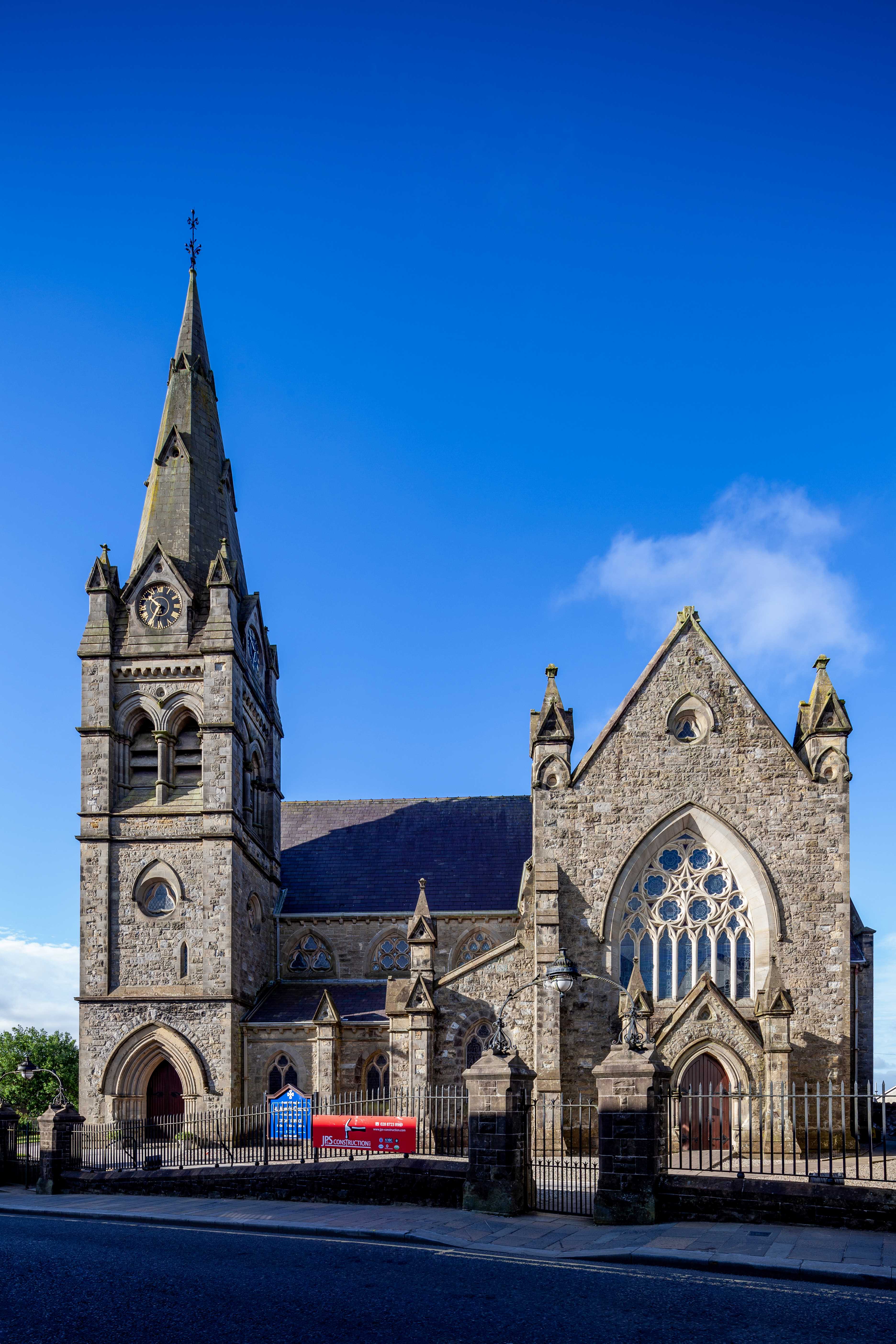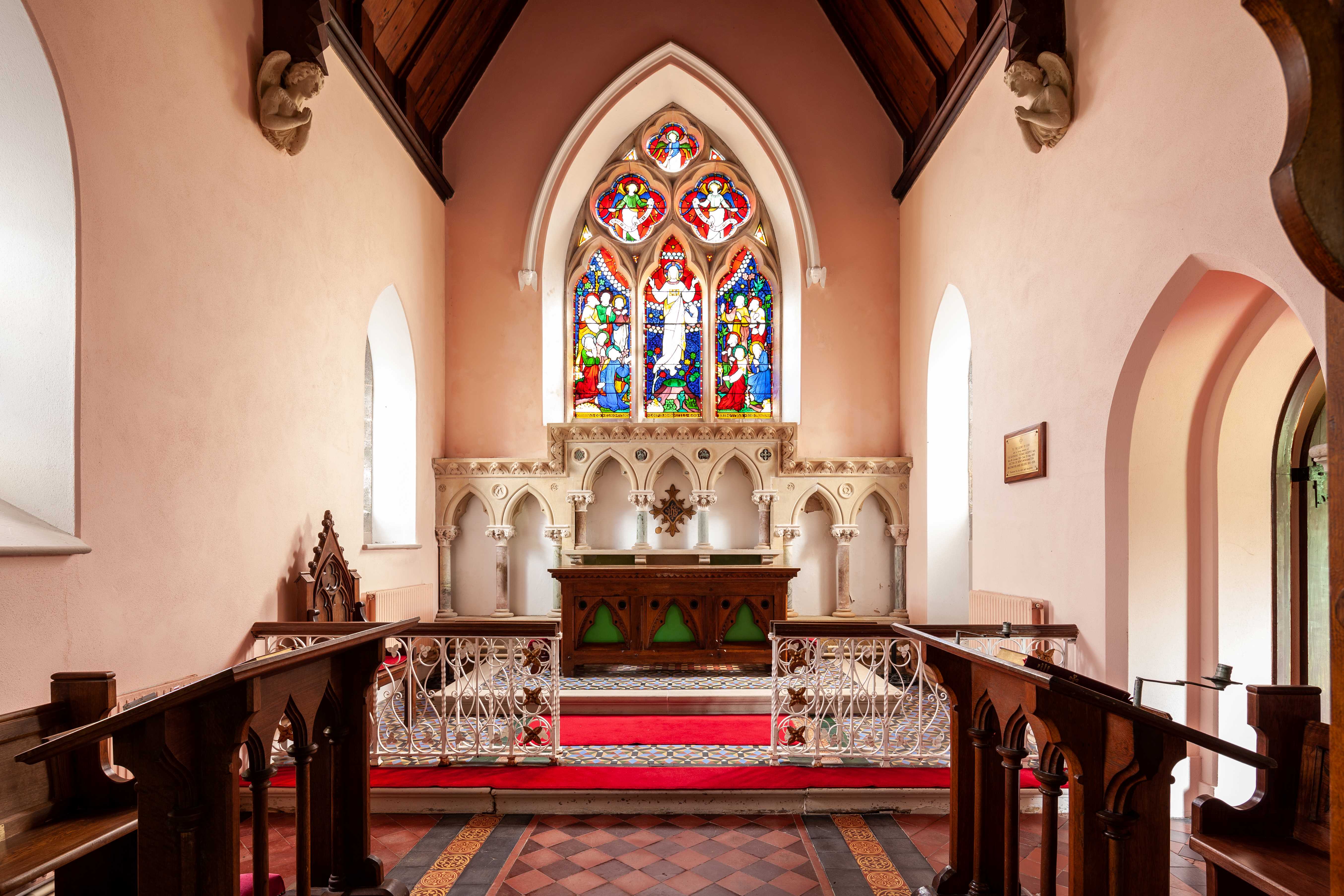
WJ BARRE, 1830-1867: A Vigorous Mind
William Barre was a highly talented, special kind of architect who lived a short but very prolific and eventful life, during the course of which he designed several fine churches – rather unusually, across all denominational lines in Ireland. For the Church of Ireland, in the Armagh diocesan area, these included the really remarkable St Anne’s, Dungannon (Drumglass) and the prettily situated St Mary’s Drumbanagher, and he transformed St Luke’s, Ballymoyer along ecclesiological lines for the Synnott family. He also had a hand in changes to St James’s, Moy and St Luke’s, Loughgall, and he did design work for Archbishop Beresford at the Music Hall in Vicar’s Hill and at the Palace Stables.
Ulster Architectural Heritage (UAH), a charity which promotes the value of and aims to protect the historic built environment, has just published a beautifully illustrated, comprehensive and lively account of Barre, written by the former Church of Ireland Press Officer, the architectural historian Paul Harron (who is now Chief Executive of UAH), who will be known to many. The handsome new monograph is a further title by the author in UAH’s ‘Architects of Ulster’ series (his first book was the acclaimed Young and Mackenzie: A Transformational Provincial Practice) and produced to the high publishing standards for which UAH is well renowned.
Beyond church designs and indeed the Armagh diocesan area, WJ Barre was the designer of many landmark buildings such as the Albert Clock, the Ulster Hall, the former Provincial Bank at 2 Royal Avenue and ‘Danesfort’, the US Consulate, all in Belfast; both the Non Subscribing Presbyterian and Riverside Presbyterian churches in Newry – both very notable buildings there – and the unusual and distinctive Crozier Memorial in Banbridge. Barre’s life was tragically short by contracting TB but he was highly ambitious and no shrinking violet, challenging the architectural elites of his day. A native of Newry, Co. Down, he moved his practice to Belfast in 1860 as Belfast began to burgeon. Distinctive, original, eclectic, sometimes quirky and often dramatic, his building designs form some of the richest components of Ulster’s built environment from the High Victorian period. The author says simply, ‘Barre was driven by ambition to be the best architect around. “Just look what I can do”, he often seems to say.’
The new publication covers Barre’s life and practice, his ecclesiastical, domestic, commercial, civic and memorial work, and also includes a full gazetteer for those who wish to explore his buildings with fresh eyes and useful information to hand. It is illustrated with specially commissioned, striking new photographs by David Bunting.
For further information on the new book – and other UAH titles and the vital work of UAH – visit: www.ulsterarchitecturalheritage.org.uk.
UAH members receive a 25% discount on purchase of publications.
Published in hardback, full-colour, priced £28. ISBN 978-0-900457-84-5

St Anne's Dungannon

St Luke's Ballymoyer